Antihistamines selectively block the effects of histamine at the histamine-1 receptor sites, decreasing the allergic response. Antihistamines are used for the relief of symptoms associated with seasonal and perennial allergic rhinitis, allergic conjunctivitis, uncomplicated urticaria, and angioedema.
Learn about the uses and nursing care plan considerations and nursing diagnoses needed for patients taking antihistamines in this nursing pharmacology study guide.
Table of Contents
- Antihistamines: Generic and Brand Names
- Disease Spotlight: Seasonal Rhinitis
- What are Antihistamines?
- Therapeutic Actions
- Indication of Antihistamines
- Pharmacokinetics of Antihistamines
- Contraindications and Cautions
- Adverse Effects of Antihistamines
- Interactions
- Nursing Considerations for Antihistamines
- Practice Quiz: Antihistamines
- Recommended Resources
- See Also
- References and Sources
Antihistamines: Generic and Brand Names
Here is a table of commonly encountered antihistamines, their generic names, and brand names:
- First-generation antihistamines
- brompheniramine (Bidhist)
- carbinoxamine (Histex, Palgic)
- chlorpheniramine (Aller-Chlor)
- clemastine (Tavist)
- cyclizine (Marezine)
- cyproheptadine
- dexchlorpheniramine
- dimenhydrinate (Dimetabs)
- diphenhydramine (Benadryl)
- hydroxyzine (Vistaril)
- meclizine (Antivert)
- promethazine (Phenergan)
- triprolidine (Zymine)
- Second-generation antihistamines
- azelastine (Asteline)
- cetirizine (Zyrtect)
- desloratadine (Clarinex)
- fexofenadine (Allegra)
- levocetirizine (Xyzal)
- loratadine (Claritin)
Disease Spotlight: Seasonal Rhinitis
Seasonal rhinitis is an inflammation of the nasal cavity, commonly called hay fever, that afflicts many people.
- This condition occurs when the upper airways respond to a specific antigen (e.g., pollen, mold, dust) with a vigorous inflammatory response, resulting again in nasal congestion, sneezing, stuffiness, and watery eyes.
What are Antihistamines?
Antihistamines block the release or action of histamine, a chemical released during inflammation that increases secretions and narrows airways.
- Antihistamines are found in multiple OTC preparations that are designed to relieve respiratory symptoms and treat allergies.
- When choosing an antihistamine, the individual patient’s reaction to the drug is usually the governing factor.
- Because first-generation antihistamines have greater anticholinergic effects with resultant drowsiness, a person who needs to be alert should be given one of the second-generation, less sedating antihistamines.
- Because of their OTC availability, these drugs are often misused to treat colds and influenza.
Therapeutic Actions
The desired actions of antihistamines are as follows:
- Selectively block the effects of histamine at the histamine-1 receptor sites, decreasing the allergic response.
- Anticholinergic (atropine-like) and antipruritic effects.
Indication of Antihistamines
Antihistamines are indicated for the following:
- Relief of symptoms of seasonal and perennial allergic rhinitis, allergic conjunctivitis, uncomplicated urticarial, and angioedema.
- Relief of nasal and non-nasal symptoms of seasonal and perennial allergic rhinitis.
- Relief of discomfort associated with dermographism; used as adjunctive therapy in anaphylactic reactions.
- Relief of nausea and vomiting associated with motion sickness.
Pharmacokinetics of Antihistamines
The antihistamines are well-absorbed orally, with an onset of action ranging from 1 to 3 hours.
| Route | Onset | Peak | Onset |
| Oral | 15-30 min | 1-4h | 4-7h |
| IM | 20-30 min | 1-4h | 4-7h |
| IV | Rapid | 30-60 min | 4-8h |
| T 1/2: 2.5 to 7 hours | Metabolization: Liver | Excretion: Urine |
Contraindications and Cautions
The following are contraindications and cautions when using antihistamines:
- Pregnancy and lactation. Antihistamines are contraindicated during pregnancy and lactation unless the benefit to the mother clearly outweighs the potential risk to the fetus or baby.
- Renal or hepatic impairment. They should be used with caution in renal or hepatic impairment, which could alter the metabolism and excretion of the drug.
- Arrhythmias. Special care should be taken when these drugs are used by any patient with a history of arrhythmias or prolonged QT intervals because fatal cardiac arrhythmias have been associated with the use of certain antihistamines and drugs that increase QT intervals, including erythromycin.
Adverse Effects of Antihistamines
Adverse effects from the use of antihistamines include:
- CNS: Drowsiness and sedation.
- GI: Drying of the GI mucous membranes, GI upset, nausea.
- GU: Dysuria, urinary hesitancy.
- Skin: Skin eruption and itching.
Interactions
Interactions involved in the use of antihistamines include:
- Monoamine inhibitor (MAOI). Anticholinergic effects may be prolonged if diphenhydramine is taken with a monoamine inhibitor.
- Ketoconazole/erythromycin. Interaction of fexofenadine with ketoconazole or erythromycin may raise fexofenadine concentrations to toxic levels.
Nursing Considerations for Antihistamines
Nursing considerations for a patient using antihistamines include the following:
Nursing Assessment
History taking and examination of a patient using antihistamines may include the following:
- Assess for possible contraindications or cautions: any history of allergy to antihistamines; pregnancy and lactation; and prolonged QT interval, which are contraindications to the use of the drug; and renal or hepatic impairment, which requires cautious use of the drug.
- Perform a physical examination to establish baseline data for assessing the effectiveness of the drug and the occurrence of any adverse effects associated with the drug therapy.
- Assess the skin color, texture, and lesions to monitor for anticholinergic effects or allergy.
- Evaluate orientation, affect, and reflexes to monitor for changes due to CNS effects.
- Assess respirations and adventitious sounds to monitor drug effects.
- Evaluate renal and liver function tests to monitor for factors that could affect the metabolism or excretion of the drug.
Nursing Diagnosis and Care Planning
Nursing diagnoses and nursing care plans related to medical therapy with an antihistamine may include:
- Acute pain related to GI, CNS or skin effects of the drug.
- Disturbed sensory perception (Kinesthetic) related to CNS effects.
- Deficient knowledge regarding drug therapy.
Nursing Implementation with Rationale
Nursing interventions for patients using antihistamines include the following:
- Proper administration. Administer drug on an empty stomach, 1 hour before or 2 hours after meals, to increase the absorption.
- Drug effectiveness. Note that the patient may have a poor response to one of these agents but a very effective response to another; the prescriber may need to try several different agents to find the one that is most effective.
- Relief from dry mouth. Because of the drying nature of antihistamines, patients often experience dry mouth, which may lead to nausea and anorexia; suggest sugarless candies or lozenges to relieve some of the discomforts.
- Safety measures. Provide safety measures as appropriate if CNS effects occur to prevent patient injury.
- Increase fluid intake. Increase humidity and push fluids to decrease the problem of thickened secretions and dry nasal mucosa.
- Ensure voiding. Have patient void before each dose to decrease urinary retention if this is a problem.
- Skin care. Provide skin care as needed if skin dryness and lesions become a problem to prevent skin breakdown.
- Avoid alcohol. Caution the patient to avoid alcohol while taking these drugs because serious sedation can occur.
- Avoid OTC drugs. Caution the patient to avoid excessive dose and to check OTC drugs for the presence of antihistamines, which are found in many OTC preparations and could cause toxicity.
- Health teaching. Provide thorough patient teaching, including the drug name and prescribed dosage measure to help avoid adverse effects, warning signs that may indicate problems, and the need for periodic monitoring and evaluation, to enhance patient knowledge about the drug therapy and promote compliance.
- Encourage patient support. Offer support and encouragement to help the patient cope with the disease and the drug regimen.
Evaluation
Evaluation of a patient using antihistamines include:
- Monitor patient response to the drug (relief of the symptoms of allergic rhinitis).
- Monitor for adverse effects (skin dryness, GI upset, sedation and drowsiness, urinary retention, thickened secretions, glaucoma).
- Evaluate the effectiveness of the teaching plan (patient can name drug, dosage, adverse effects to watch for, specific measures to avoid them, and measures to take to increase the effectiveness of the drug.
- Monitor the effectiveness of comfort and safety measures and compliance with the regimen.
Practice Quiz: Antihistamines
Here’s a 5-item quiz for this antihistamine study guide. Please visit our nursing test bank page for more NCLEX practice questions.
1. A nurse is giving teachings to a client receiving Desloratadine (Clarinex). Which of the following statements made by the client will need further instructions?
A. “I can eat gum after I drink the medicine”
B. “I can take the medicine on an empty stomach“
C. “I should avoid using alcohol”
D. “I will avoid driving while using this medication”
1. Answer: B. “I can take the medicine on an empty stomach”.
- Option B: This medicine should be taken with food or milk to minimize gastrointestinal upset.
- Option A: Use gum or hard candy to minimize dry mouth.
- Options C and D: The medication causes drowsiness so avoid taking alcohol or engaging in activities which require mental alertness such as driving a car.
2. Nurse Zeke is giving instructions to her client who is taking antihistamine. Which of the following nurse teachings is appropriate for the client?
A. Expect a relief in 24 hours
B. Be aware that you may have increased saliva
C. Be aware that you may need to take a decongestant
D. Avoid ingesting alcohol
2. Answer: D. Avoid ingesting alcohol.
- Option D: Because alcohol and antihistamines have sedating properties, concurrent administration of these drugs should be avoided.
- Option A: Not all antihistamines last 24 hours.
- Option B: Dry mouth is a common side effect, not increased salivation.
- Option C: Antihistamines and decongestants are often given together.
3. Andrew has vertigo, which antihistamine is best for his condition?
A. Terfenadine
B. Guaifenesin
C. Meclizine
D. Hydrocodone
3. Answer: C. Meclizine.
- Option C: Meclizine (Antivert) is given for vertigo and motion sickness.
- Option A: Terfenadine is an antihistamine, but meclizine is the standard drug in the treatment of vertigo.
- Option B and D: Choices C and D are not antihistamines.
4. Raul, a 20-year-old student, used to buy OTC drugs whenever he feels sick. Which of the following statements best describes the danger of self-medication with over-the-counter drugs?
A. Clients are not aware of the action of over-the-counter drugs.
B. Clients are not aware of the side effects of over-the-counter drugs.
C. Clients minimize the effects of over-the-counter drugs because they are available without a prescription.
D. Clients do not realize the effects of over-the-counter drugs.
4. Answer: C. Clients minimize the effects of over-the-counter drugs because they are available without a prescription.
- Option C: This choice is correct because it includes the other three risks noted in choices A, B, and D.
5. Which histamine-2 antagonist is associated with the most drug interactions?
A. Prilosec
B. Nizatidine
C. Ranitidine
D. Cimetidine
5. Answer: D. Cimetidine.
Option D: Cimetidine was the first histamine-2 antagonist developed and is associated with the most toxic drug interactions of the group.
Recommended Resources
Our recommended nursing pharmacology resources and books:
Disclosure: Included below are affiliate links from Amazon at no additional cost from you. We may earn a small commission from your purchase which will help support us. Thank you! For more information, check out our privacy policy.
Pharm Phlash! Pharmacology Flash Cards #1 BEST SELLER!
Test-yourself review cards put critical clinical information for nearly 400 of the top generic medications at your fingertips. And, you can count on them for accuracy, because each card is based on content from Davis’s Drug Guide for Nurses. Increase your test scores in pharmacology class.
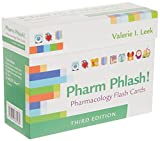
Focus on Pharmacology (8th Edition)
Focus on Nursing Pharmacology makes challenging concepts more approachable. Engaging learning features cultivate your clinical application, critical thinking and patient education capabilities. This updated 8th edition builds on your knowledge of physiology, chemistry and nursing fundamentals to help you conceptualize need-to-know information about each group of drugs.
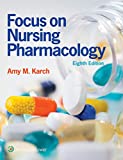
Pharmacology Made Incredibly Easy (Incredibly Easy! Series®)
Nursing pharmacology guide offers step-by-step guidance so you can grasp the fundamentals in enjoyable Incredibly Easy style. This is the perfect supplement to class materials, offering solid preparation for NCLEX® as well as a handy refresher for experienced nurses. Colorfully illustrated chapters offer clear, concise descriptions of crucial nursing pharmacology concepts and procedures.
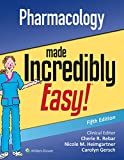
Lehne’s Pharmacology for Nursing Care (11th Edition)
The Eleventh Edition of Lehne’s Pharmacology for Nursing Care provides a thorough understanding of key drugs and their implications for nursing care. This text, written by renowned nursing educators, helps you comprehend and apply pharmacology principles. A clear and engaging writing style simplifies complex concepts, making even the most challenging pharmacology content enjoyable. We recommend this book if you want a comprehensive nursing pharmacology guide.
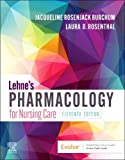
Nursing Drug Handbook
Nursing2023 Drug Handbook delivers evidence-based, nursing-focused drug monographs for nearly 3700 generic, brand-name, and combination drugs. With a tabbed, alphabetical organization and a “New Drugs” section, NDH2023 makes it easy to check drug facts on the spot.
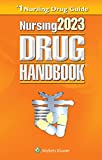
Pharmacology and the Nursing Process
The 10th edition of Pharmacology and the Nursing Process offers practical, user-friendly pharmacology information. The photo atlas contains over 100 unique illustrations and photographs depicting drug administration techniques. Updated drug content reflects the most recent FDA drug approvals, withdrawals, and therapeutic uses.
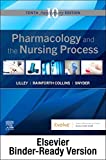
Mosby’s Pharmacology Memory NoteCards: Visual, Mnemonic, and Memory Aids for Nurses
The 6th edition of Mosby’s Pharmacology Memory NoteCards: Visual, Mnemonic, & Memory Aids for Nurses incorporates illustrations and humor to make studying easier and more enjoyable. This unique pharmacology review can be utilized as a spiral-bound notebook or as individual flashcards, making it ideal for mobile study.
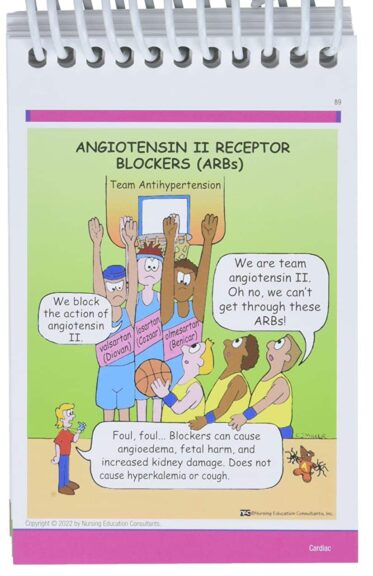
See Also
Here are other nursing pharmacology study guides:
- Nursing Pharmacology – Study Guide for Nurses
Our collection of topics related to nursing pharmacology - Pharmacology Nursing Mnemonics & Tips
These nursing mnemonics aim to simplify the concepts of pharmacology through the use of a simple, concise guide. - Generic Drug Name Stems Cheat Sheet
Learn about these generic drug name stems to help you make sense of drugs easier! - Common Drugs and Their Antidotes
A guide to drug antidotes that nurses should be familiar about. - IV Fluids and Solutions Guide & Cheat Sheet
Get to know the different types of intravenous solutions or IV fluids in this guide and cheat sheet. - Drug Dosage Calculations NCLEX Practice Questions (100+ Items)
Care to take the challenge? This quiz aims to help students and registered nurses alike grasp and master the concepts of medication calculation.
Drug Guides NEW!
Individual drug guides and nursing considerations for the most common medications used in nursing pharmacology:
- Acetaminophen (Tylenol)
- Aspirin
- Atorvastatin (Lipitor)
- Enoxaparin (Lovenox)
- Furosemide (Lasix)
- Gabapentin
- Hydromorphone (Dilaudid)
- Lisinopril
- Metoprolol
- Morphine
Gastrointestinal System Drugs
Respiratory System Drugs
- Antihistamines
- Bronchodilators and Antiasthmatics
- Decongestants
- Expectorants and Mucolytics
- Inhaled Steroids
- Lung Surfactants
Endocrine System Drugs
- Adrenocortical Agents
- Antidiabetic Agents
- Glucose-Elevating Agents
- Hypothalamic Agents
- Insulin
- Parathyroid Agents: Bisphosphonates, Calcitonins
- Pituitary Drugs
- Sulfonylureas
- Thyroid Agents
Autonomic Nervous System Drugs
- Adrenergic Agonists (Sympathomimetics)
- Adrenergic Antagonists (Sympatholytics)
- Anticholinergics (Parasympatholytics)
- Cholinergic Agonists (Parasympathomimetics)
Immune System Drugs
Chemotherapeutic Agents
- Anthelmintics
- Anti-Infective Drugs
- Antibiotics
- Antifungals
- Antineoplastic Agents
- Antiprotozoal Drugs
- Antiviral Drugs
Reproductive System Drugs
Nervous System Drugs
- Antidepressants
- Antiparkinsonism Drugs
- Antiseizure Drugs
- Anxiolytics and Hypnotic Drugs
- General and Local Anesthetics
- Muscle Relaxants
- Narcotics, Narcotic Agonists, and Antimigraine Agents
- Neuromuscular Junction Blocking Agents
- Psychotherapeutic Drugs
Cardiovascular System Drugs
References and Sources
The following are the recommended supplemental reading for this antihistamine nursing pharmacology study guide:
- Roth, T., Roehrs, T., Koshorek, G., Sicklesteel, J., & Zorick, F. (1987). Sedative effects of antihistamines. Journal of Allergy and Clinical Immunology, 80(1), 94-98.
- Vallerand, A. H. (2018). Davis’s drug guide for nurses. FA Davis. [Link]
- Woosley, R. L. (1996). Cardiac actions of antihistamines. Annual review of pharmacology and toxicology, 36(1), 233-252.
